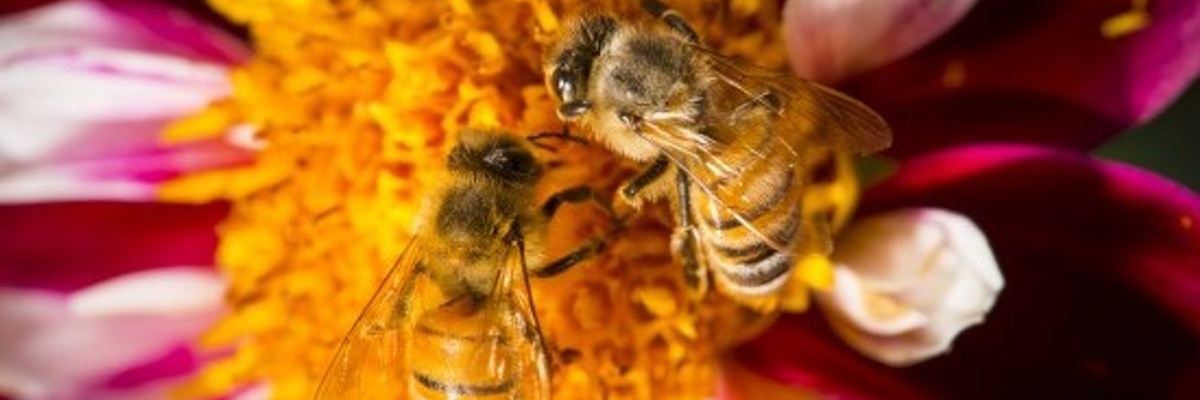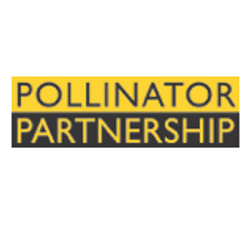

Whether you are a farmer of many acres, land manager of a large tract of land, or a gardener with a small lot, you can increase the number of pollinators in your area by making conscious choices to include plants that provide essential habitat for bees, butterflies, moths, beetles, hummingbirds, and other pollinators. Happy planting!
Whether you are a farmer of many acres, land manager of a large tract of land, or a gardener with a small lot, you can increase the number of pollinators in your area by making conscious choices to include plants that provide essential habitat for bees, butterflies, moths, beetles, hummingbirds, and other pollinators. Happy planting!
July seems to be the magic month for all types of bees! The mountain mint and the cone flowers are still attracting them by the droves. This is the first time we've been able to really snap a bumble bee with a full pollen basket or corbicula. We are seeing plenty of cabbage whites too.





July 6, 2023
This week in the garden, recent generous thunderstorms have provided much needed rain and the garden is in full bloom. The daylilies and black-eyed susans are most striking. There were bees galore in the pollinator garden. Big bees, little bees, super sized bumble bees: we're feeding them all. Fortunately the bees are congenial and take turns feeding.

June 26, 2023
When I visited the pollinator garden on June 14, I saw lots of bumbles but no honeybees. Today there were bumblebees on the cherry bells in the front yard (under the crabapple tree) and the pollinator garden was alive with honeys. What changed? The mountain mint (pycnanthemum muticum) is blooming. Last summer mountain mint was our most popular honeybee plant and that trend continues in 2023.
High winds and downpours (yay rain!) caused several plants to lean into the path that leads through the pollinator garden. Our garden is intended to feed bugs, yes, but also to demonstrate effective pollinator plants so humans may be inspired to plant these at home. Therefore humans need to walk down the path to view the plants. I trimmed back a couple of asters and some mountain mint. Think of it as a second Chelsea chop. When I took the debris back to the treeline to compost, a local resident appeared to investigate.

June 20, 2023
Ladies and gentlemen, swallowtail season has begun. The fellow pictured below is munching fennel in Lake Ridge this morning.

June 14, 2023
Another week has passed without significant rainfall - We're now six inches below average for 2023. When driving out to Nokesville this morning, I was struck by how brown the lawns and roadsides looked. June looks like August. Library staff are diligently watering the pollinator garden and it's blooming gloriously. I enjoyed watching bumblebees.




We enjoyed your visit, Michaela!
I got to see the blooms and bees today! Absolutely gorgeous!
June 7, 2023
Northern Virginia is in drought. 2023 is the fifth driest year on record. At the library the front lawn is browning but the gardens look great. George waters the pollinator garden twice a week to keep the flowers in bloom for the bugs. The front gardens rely on rainfall. Those plants have been in place for decades and this isn't their first rodeo. The foliage may brown but the roots are well established and the plants will survive.
In addition to watering the pollinator garden, library staff also keep the birdbath filled with fresh water. Bees need water so rocks have been placed in the birdbath allowing the bees to safely access the water.
Four hummingbirds visited the library yesterday! In dry years hummers depend on the kindness of humans and Rebecca is maintaining four feeders for them.
The pollinator garden is thriving. It's exciting to see seedling coneflowers and milkweed filling in and blooming. When the pollinator garden was established, we planted swamp milkweed. Common milkweed has shown up on its' own to join the garden. The more the merrier!





June 1, 2023
Campanula glomerata (clustered bellflower) is blooming in the front garden. Before falling in love with its' rich purple tones beware: this plant spreads vigorously. In good garden soil with water and fertilizer it will take over. Ours stays in check due to a very dry location.

May 24, 2023
Achillea Coronation Gold began blooming in early May. It will continue to bloom until frost. Six months of bloom is incredible - this is one of the best pollinator plants available in commerce. The foliage is cool so humans like it too. It needs a dry, full sun location.

May 18, 2023
This week in the garden I cut back the columbine flower stalks. Once the flowers fade, cutting back the stalks will prevent reseeding. This garden has PLENTY of columbines so we don't need the seeds falling & germinating.
The white bearded iris have finished blooming. Today the blooming iris is Clarence (pictured below). Bearded iris bloom in May in Virginia. Clarence will bloom in May and again in October: he's a rebloomer. If you lived in California, there are several dozen bearded iris that rebloom reliably there. In Virginia there are just a couple: Clarence and Harvest of Memories (yellow).

May 17, 2023
A monarch butterfly visited my home garden in Lake Ridge this afternoon! I don't expect to see monarchs before July so I was quite astonished. We haven't seen any monarchs or swallowtails in the Nokesville library garden yet this year. A quick check on Journeynorth.org shows numerous monarch sightings in Virginia this week so maybe they're arriving early this year.
May 10, 2023
The peonies are blooming! It's been a few years since we last saw them: in 2022 the just opening blooms were flattened by a strong thunderstorm with high winds. In 2021 a late spring frost burned the buds. So it's wonderful to see them again in all their big fluffy glory. George estimates that the Nokesville Library peonies are about thirty years old.

In more mundane garden news, the October Skies asters in the pollinator garden were cut back today. Asters and chrysanthemums benefit from a May trim to keep them bushy and encourage more blooms.
May 3, 2023
Tradescantia virginiana aka spiderwort is in bloom in the front garden. Spiderwort is a Virginia native wildflower. I watched a bumblebee feeding on ours despite the unseasonably chilly morning. Each blue three petaled blossom only lasts a day but the plant keeps producing them for about a month.
The downside of this plant is aggressive spreading. The original clump stays in place but the seeds are insidious - new plants pop up throughout your garden bed. Then in July, the foliage yellows and melts away leaving an empty spot in the flowerbed. It isn't dead, it's dormant. The summer dormancy period ends when we get some fall rain then the foliage reappears.
I've been seeing spiderwort offered for sale in local nurseries. The flowers range from blue to purple to pink. All three colors spread aggressively. A version named "Sweet Kate" with golden yellow foliage is also available - this one has sterile seeds so it doesn't spread.

April 27, 2023
Our bearded iris have begun to bloom. Iris season should be an official holiday. The white tall bearded iris by the entrance are hard to miss. There is a smaller, more interesting iris growing in the adjacent bed. Iris cristata, the dwarf crested iris is native to the southeastern US. It ranges in color from blue to lavender to white. Spreading by rhizomes it can form large colonies in rich, moist partly shaded locations. Ours is growing in a rather dry location so it remains in a clump and shows no inclination to take over the flower bed. It's been growing here for many years thanks to the generous spirit of Stephania Powell.

6 Participants
